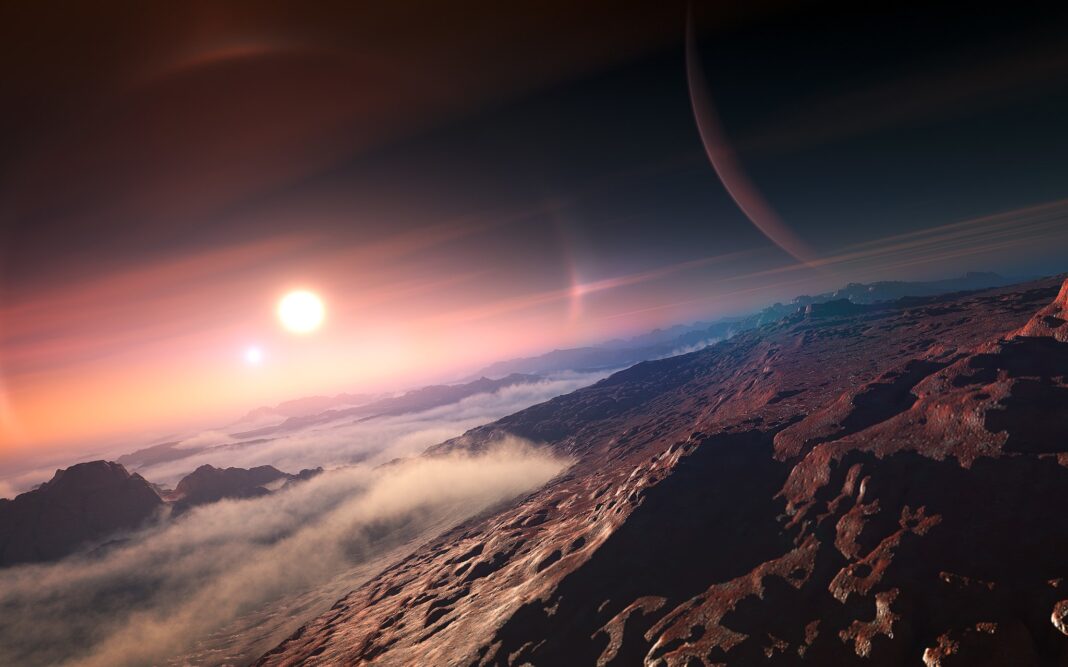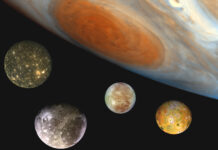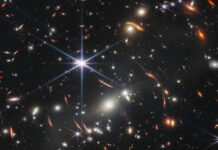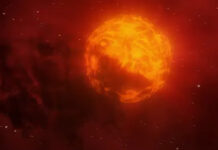Water found on an exoplanet in the Habitable Zone
Exoplanet K2-18b is a “super-earth” orbiting within its host star’s habitable zone; however, its mass likely implies this exoplanet is more like Neptune than Venus.
K2-18b probably has a very thick atmosphere, a deep ocean, and a thick icy mantle with a rocky core. So, it may not be habitable to Earthly life but, as a paper published last year by Bjorn Benneke and his team shows, water vapour has likely been detected in this world’s atmosphere.
Water is essential to life as we know it; thus, this find brings us closer to detecting life itself.

Reference: Benneke, Björn, et al. “Water Vapor and Clouds on the Habitable-zone Sub-Neptune Exoplanet K2-18b.” The Astrophysical Journal Letters 887.1 (2019): L14. [OPEN ACCESS]
NASA releases potential hyper-drive!
David Burns, a NASA engineer, devised a concept for an emissionless propulsion system based on general-relativistic concepts which could take a spacecraft up to 99% the speed of light.
The theoretical system would make use of a concept in General Relativity wherein a “donut” in a box slides back and forth causing the box to accelerate according to Newton’s Third Law. If the donut changes size when sliding back, and grows again when travelling forwards, then a net forward acceleration can result.
Because a shrinking-growing donut is very hard to do, why not just spin it instead? Theoretically, one should garner a similar result. However, the energy required to spin the donut would be…a lot!
I will also note here that the paper discussed in the video linked here no longer exists. This is probably because of the controversy that has arisen since its publishing. This may mean David’s proposal is not as grounded in science as he’d like to think, or it’s a sound proposal but has since become too controversial for NASA to handle.
“Not saying it’s Martian aliens, but….”
…NASA released a report concerning gaseous emissions detected by Curiosity within Gale crater that couldn’t be explained easily by abiotic processes.
Mars’ atmosphere fluctuates during the course of its year around the Sun. In the Summer, gas levels increase; in the Winter, the levels decrease as CO2, CH4, and other gasses freeze to the surface.
However, Curiosity readings have implied the fluctuations of methane and oxygen, in particular, increase to levels somewhat higher than models could predict during Summer months and decrease to levels lower than predicted during the Winter.

So far, no abiotic explanation has been found to explain this finding to researchers’ satisfaction. This is why NASA remains reserved in announcing this finding, and why they’re calling out to scientists worldwide to help explain it!
Is it abiotic after all, or is it life on Mars?
Reference: NASA Report|With Mars Methane Mystery Unsolved, Curiosity Serves Scientists a New One: Oxygen (Nov 2019), by Lonnie Shekhtman
Speaking of potentially alien microbes….
Apparently, there exists a bacterium that prefers to munch on meteorites to the exclusion of most other things.
An extremophile bacterial species, Metallosphaera sedula converts metals and other inorganic nutrients into methane and fuel for itself. However, M. sedula thrives best in meteorite rock than in Earthly rock.
Is this potential evidence for panspermia (the theory that life in the form of microbes can survive in an ejected piece of rock to eventually be seeded on another Earth-like planet) in the deep past, or do meteorites just “taste better” to certain extremophile bacteria?
Reference: Milojevic, Tetyana, et al. “Exploring the microbial biotransformation of extraterrestrial material on nanometer scale.” Scientific reports 9.1 (2019): 1-11. [OPEN ACCESS]
First-ever surficial map of a neutron star
The first-ever global map of a neutron star has offered up an oddity or two to scientists.
Similar to black holes, neutron stars produce strong relativistic effects including time dilation effects for those closer to the body compared to far away, ability to see most of the object’s surface from any given standard viewpoint of it (including large parts of the other side of the object’s surface, something impossible to do with normal stars and planets), and production of accretion disks and polar jets when “fed” with sufficient matter.
However, a mapping project using NICER, an instrument installed upon the International Space Station designed to detect x-rays emitted from neutron stars, has found a series of “patches” of higher-intensity material clustered about a pulsar’s south pole (a pulsar is a neutron star that pulsates regularly); these patches were likely created from the accretion of some material upon its surface, but why they’re clustered about the south pole alone remains a mystery.
Most distant directly-observable galaxy viewed to-date
MAMBO 9 is a large galaxy located about as far away from the Milky Way as galaxies can get. While not the farthest galaxy from us in the absolute sense, MAMBO 9 is the farthest galaxy that astronomers were actually able to view directly – not merely by gravitational lensing.

Because it was viewed directly, its true size could be known…and it’s larger than our Milky Way! It’s a proto-galaxy, but its size, especially compared to most other proto-galaxies that are just Magellanic Cloud-sized (the Large and Small Magellanic Clouds are small, satellite galaxies that orbit the Milky Way), is notably surprising.
How big would MAMBO 9 be today, though?
Image Credit: Jim Secosky picked out a NASA image NASA/JPL-Caltech / Public domain





